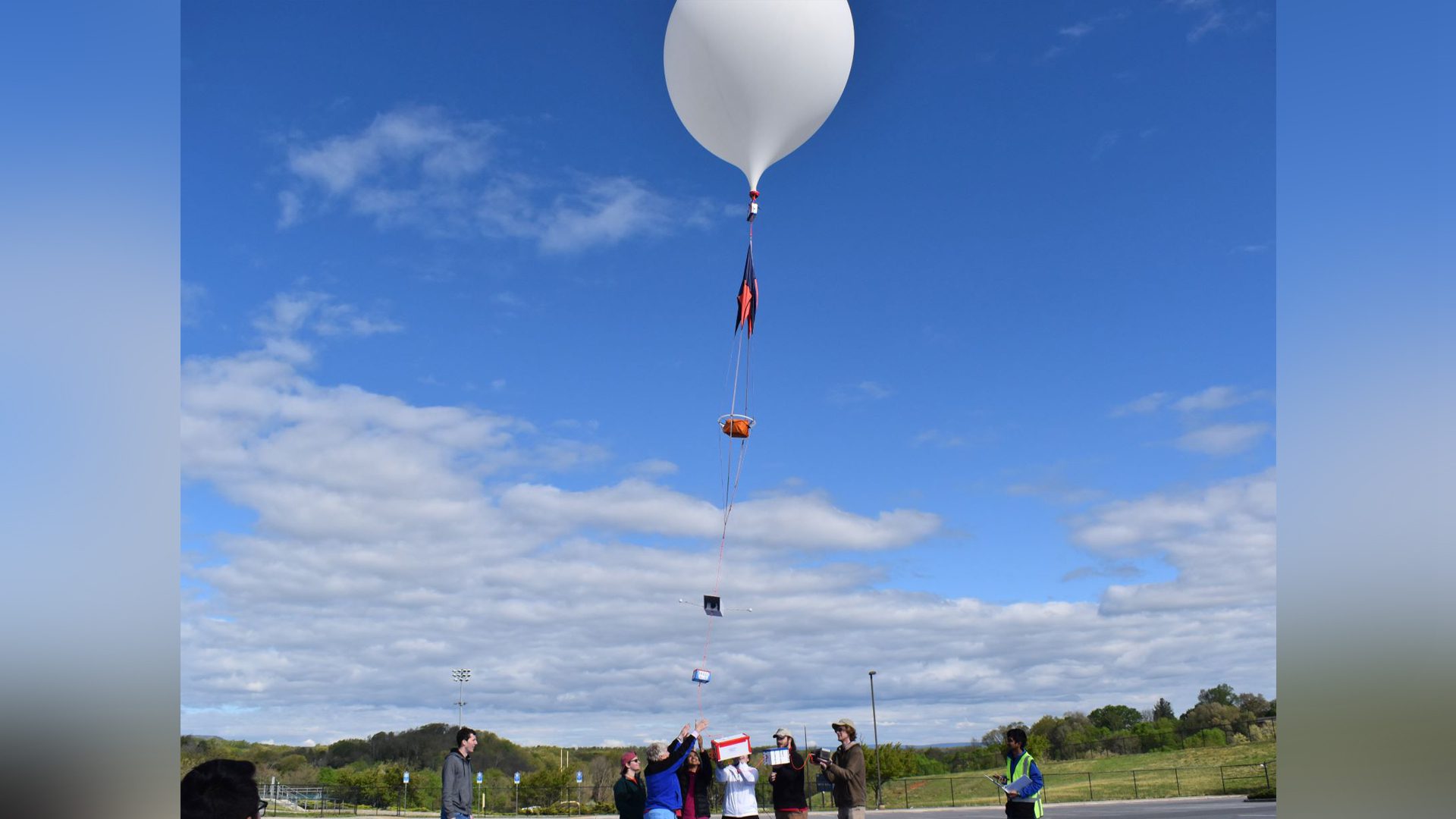- October 12, 2023
- By Robert Herschbach
The checklist for a high-altitude balloon launch is daunting: Predict the flight path, taking into account wind direction and speed. Choose a suitable launch site. Measure payload weight and necessary lift, along with flight duration, ascent rate and target altitude. Then make sure the balloon is inflated with the correct amount of helium.
Now imagine doing all this for a launch during a time window that slams shut after only a few minutes.
That’s the challenge the University of Maryland’s Nearspace team and other teams involved in NASA’s National Eclipse Ballooning Project (NEBP) are taking on: to gather valuable data from high in the atmosphere during Saturday’s annular eclipse and a total solar eclipse in April 2024. (In an annular eclipse, part of the sun is visible, leaving a “ring of fire” effect.)
Nationwide, 53 teams composed of more than 700 students hailing from 75 institutions will participate. They’ll fan out across the U.S. to conduct balloon launches during each of the eclipses, enabling a much larger and richer array of information to be obtained than would be the case with a single launch from one location. (Watch the launch on the UMD Nearspace team’s YouTube channel.)
As Maryland Nearspace Director Mary Bowden said of the April event, “you can only do so much with data from a single flight. What we’re going to get is a distributed set of data from along the entire path of totality.”
Atmospheric scientists will then be able—among other applications—to use this information to calibrate weather models, leading to improved predictions.
[Balloon Payload Program Surpasses 100-launch Milestone]
Considering that solar eclipses aren’t a frequent occurrence, it’s an opportunity not to be missed. Bowden said another total solar eclipse won’t be visible from the contiguous United States until August 2044.
The UMD team is leading a regional “pod”—or group of teams—that includes schools from Alabama, Florida, Georgia, Pennsylvania, Virginia and West Virginia. For the annular eclipse on Saturday, the UMD team plans to launch balloons from a site near San Antonio, Texas. Six months from now, the team will be on the road again, traveling to Fort Wayne, Indiana, for the total solar eclipse on April 8, 2024.
The payloads launched on these flights will include video cameras capable of streaming images back to Earth in near-real-time, as well as atmospheric sensing payloads, precision GPS, and experiments devised by students at UMD’s A. James Clark School of Engineering.
"We are very excited for this launch and are looking forward to testing our systems before the total solar eclipse in April 2024," said team member Kruti Bhingradiya '24.
The educational value of the experience is as important as its scientific results, said Bowden, noting that the student teams will gain hands-on experience in a microcosm of what an actual NASA balloon launch looks like.
Maryland Nearspace has become proficient at all aspects of high-altitude ballooning, including launch, tracking, and recovery operations, during the 20 years and over 120 flights of the program so far. The eclipses present a uniquely challenging test of their expertise.
“Many of our aerospace students are intensely interested in the space side of the field, so we’re giving them an opportunity to go through an experience that's very similar to building flight hardware and launching it into space,” she said. “It's motivational, it's educational and it's really just fun!”
Saturday’s eclipse will begin at noon and last until 2:39 p.m. in the D.C. area; it may not be visible due to forecasted rain.
Support UMD students as they prepare for this once-in-two-decades scientific and educational opportunity. Donate today at go.umd.edu/supportBPP.
Topics
Research